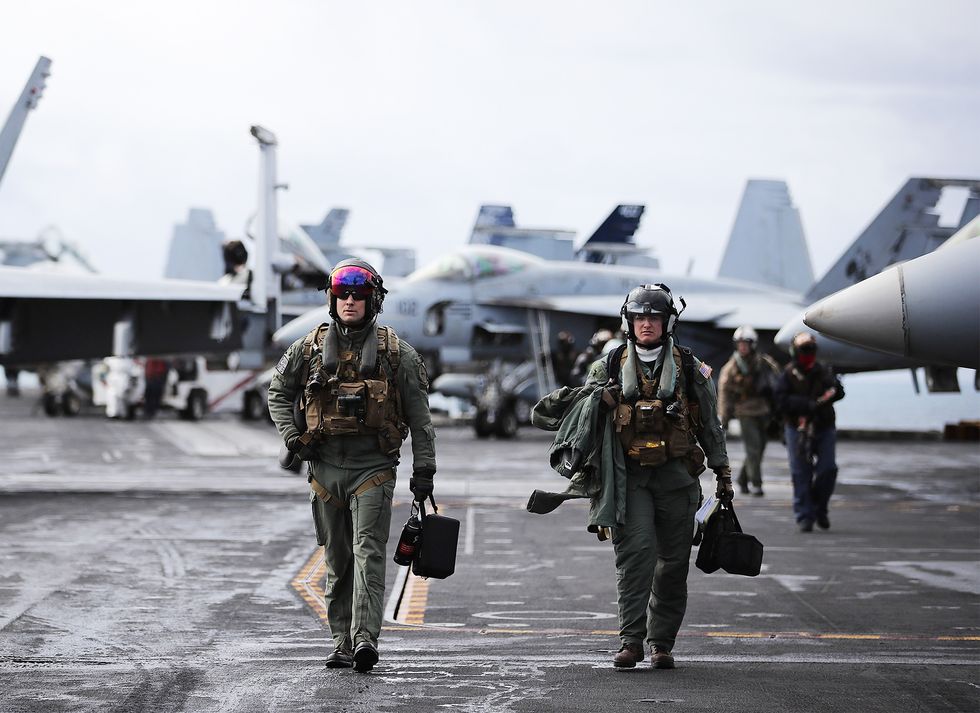

Everything an F/A-18 Fighter Pilot Wears in the Cockpit
From the HGU-68/P tactical helmet to the steel-toed, ejection-safe boots.
Like motorcyclists, U.S. Navy pilots “dress for the slide, not the ride.” Their gear is meant for frost, flames, and flotation. Even the very first pilot to operate from a ship carried safety equipment: Eugene Ely, attempting his landing on the deck of the armored cruiser USS Pennsylvania in 1911, took the controls of his Curtiss Pusher wearing a leather football helmet, bug-eyed motoring goggles, and a makeshift life vest fashioned from bicycle inner tubes.
The odds of a mission ending with an ejection from the cockpit are slim—it happens precisely 1.33 times per 100,000 hours of flying, according to the Navy. But naval flight officers still carry equipment for just such a scenario. “Most of the gear is only for emergency use,” says Lt. Luke “Oslo” DeLisio, a flight officer from Strike Fighter Squadron (VFA) 106. “But when you need it, you’re glad it’s there.”
“Like Wearing Your Pajamas to Work”
Starting from the inside out, pilots and aircrew wear cotton undergarments. In the event of a cockpit fire, cotton won’t melt and fuse to a crew member’s skin the way nylon or polyester would.
Over their skivvies, pilots wear a one-piece CWU 27/P Nomex flight suit. Developed by DuPont in the 1960s, Nomex is a fire-resistant synthetic that can withstand heat and flash (a type of electrical discharge) up to 752℉. When the Nomex suit encounters intense heat, its fibers thicken and carbonize, absorbing heat energy. The fleet standard color for the CWU 27/P is sage green, but fliers serving in the Persian Gulf region and in stateside aggressor units wear desert tan.
The flight suit is a single-piece jumper design, with a zipper up the front that assures limited points of exposure to fire. DeLisio says it’s a comfortable fit. “We call it a ‘bag.’ No ironing, the rank is already sewed on, you just put your patches on and go. It’s almost like wearing your pajamas to work.”
Studded with Velcro and eight pockets (including one zippered arm pocket with a separate flap for pens), the flight suit is the standard work outfit both inside and out of the aircraft. “I’ll usually put my wallet and cover [hat] in my leg pocket. Most of the other pockets are hard to reach while flying,” DeLisio says. Other pilots use the arm pocket to carry their mission card and a pen or two.
Finally, long, fire-resistant GS/FRP-2 gloves slip under the flier’s Nomex flight suit. The jumpsuit’s Velcro cuffs help create a tight seal. But Lt. Cmdr. Graham “Heed” Scarbro of Strike Fighter Wing Atlantic says these don’t afford the dexterity that some pilots would prefer. “Guys would regularly cut the fingertips off their gloves to better manipulate touch screens and sensitive controls in the cockpit, and the fingerless gloves tended to fall apart [after being cut],” he says. Instead, he and other aviators now fly with Wiley X Aries flight gloves. These feature an exposed thumb, middle, and index finger for greater digital precision.
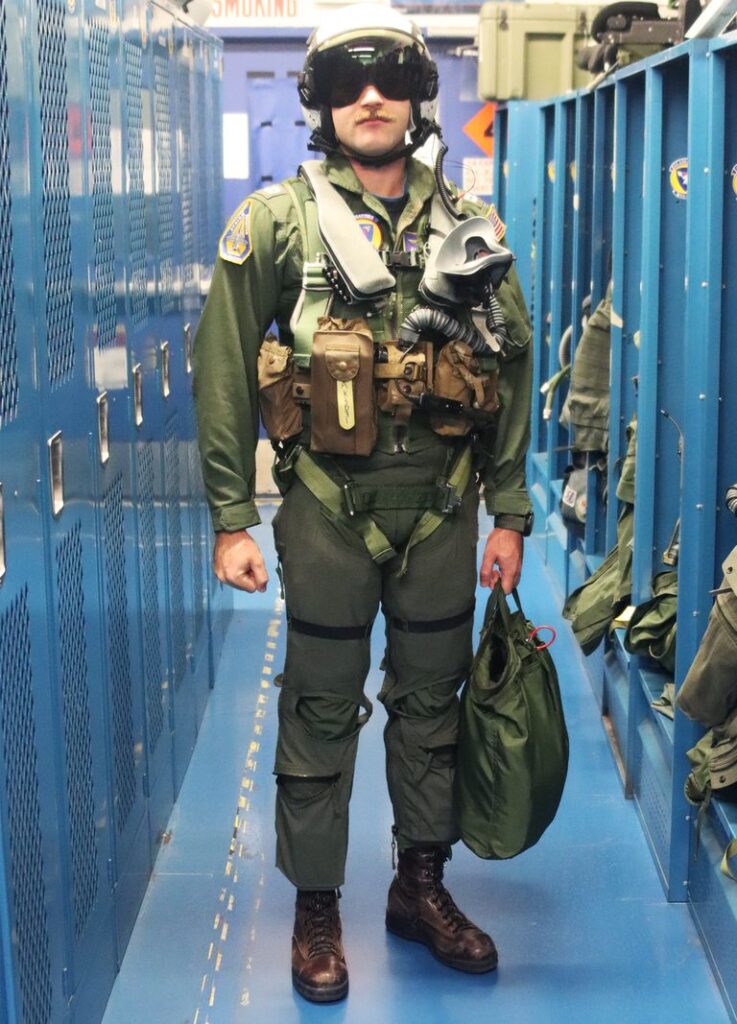
CHIEF MICHAEL COLE AND AIRCREW SURVIVAL EQUIPMENTMAN 1ST CLASS KEVIN RAMIREZ/U.S. NAVY
Why Most Pilots Don’t Wear Black
The carrier deck is like a construction site—there’s always the risk of something falling on or rolling over a pilot’s feet while he’s topside. Pilots wear fleet-issued or personally purchased (but Navy-approved) leather safety boots with steel toes. Integrated steel reinforcement also protects the aviator’s toes from catching against something in the cockpit during an ejection.
High ankle support is a must for a rough landing. While a sport parachute will slow a falling human to about 15 feet per second, a descent in a military parachute is faster—about 22 feet per second. Each pilot has his or her footwear preference, but DeLisio wears the fleet-issued Bellville flight boots. He says he’s worn through multiple pairs, but he adds a distinction: “Mine are always brown.”
Navy pilots and aircrew are in constant debate over boot color—black or brown. “A ‘black shoe’ is typically a surface guy who works for the ship,” says DeLisio. Aviators tend to wear brown, but both colors appear on the flightline today. Top Gun fliers and the Blue Angels still insist on black as part of their uniform, but brown boots are more popular among typical aircrew.
The G-Suit: A Lifesaver and Leg Massager
Over the flight suit, a flier wears a CSU-15A/P antigravity suit. The G-suit, as it’s called, looks like a pair of chaps and has air bladders that squeeze the pilot’s legs and abdomen, helping to keep blood in the pilot’s brain during high-acceleration maneuvers. Pilots can withstand roughly six times the force of gravity without wearing a G-suit, but the CSU-15A/P allows a typical F/A-18 pilot to execute 7.6-G maneuvers before experiencing a G-force-induced loss of consciousness.
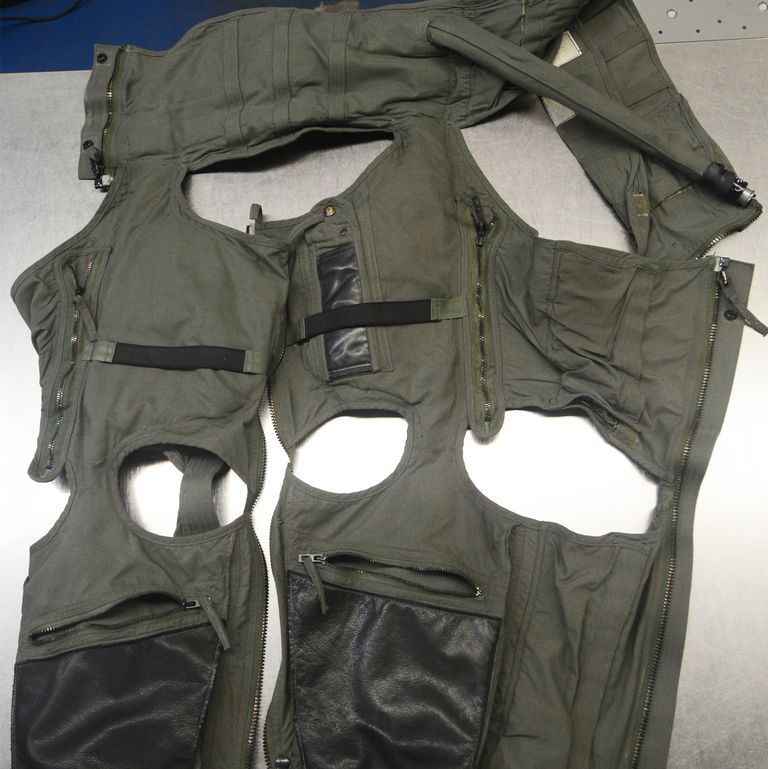
The G-suit hooks into the aircraft via a hose and is equipped with an acceleration-sensitive system that pumps air into the bladders as needed. It begins to inflate at about 3 Gs and is fully inflated at anything over 4 Gs. But pilots can fill the air bladders themselves, too—it’s hard to stretch your legs in the cockpit of a Super Hornet, so the occasional massage comes in handy. “Every once in a while, especially on a real long flight, I might press the test button,” says DeLisio.
The Most Uncomfortable Part of the Suit
Over and around the G-suit and flight suit, pilots use a combined torso harness and survival vest designated the PCU-78. Amid this conglomeration of buckles and cinches, straps go over the shoulders, around the waist, and through the legs. Scarbro concedes that this integrated harness is cumbersome: “Guys who use it tend to gripe about it getting tangled up.” He says he doesn’t wear the integrated vest himself—rather, he equips a separate harness and vest. “Like the G-suit, if it’s on right it should be a little tight and a little uncomfortable. You just get used to it, like a football player gets used to wearing pads.”
The PCU-78’s harness secures the pilot to the seat of the aircraft at four points. Up front, it clips into the flier’s parachute on both sides of the chest. These parachute attachments are equipped with SEAWARS buckles, part of a seawater-activated release system. If the pilot lands in the ocean unconscious after an ejection, the system automatically pops the parachute canopy free from the pilot upon touchdown. This prevents the risk of wind catching the parachute canopy and pulling the pilot along the water, or the parachute sinking and dragging the pilot down with it.
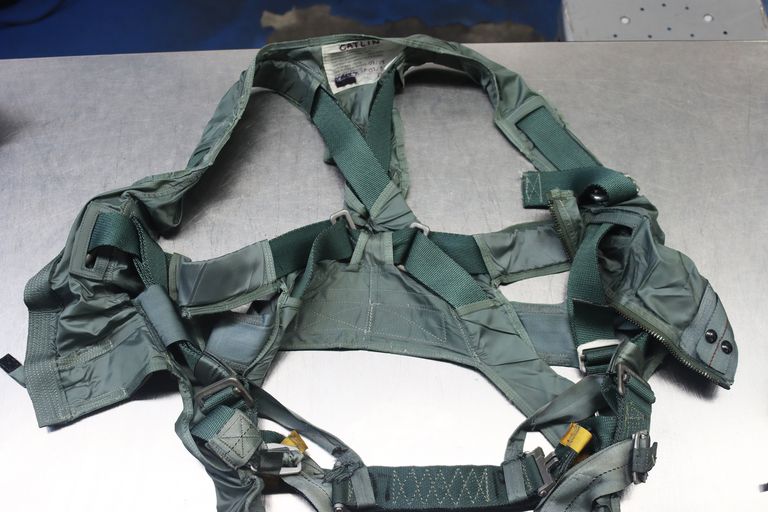
CHIEF MICHAEL COLE/U.S. NAVY
The vest portion of the PCU-78 carries a loadout of survival gear, much of which is affixed to paracord lanyards so it can’t be dropped at sea. A typical loadout might include a Phantom Warrior flashlight, a Spyderco folding knife, an AN/PRC-149 survival radio, a small water bottle, and a strobe light and signal flares, along with a whistle, compass, and mirror. Squadrons and aviators sometimes customize their gear depending on what they require or prefer on a mission. “When in deployment, I flew with an extra knife and a CamelBak to provide some extra water,” says DeLisio.
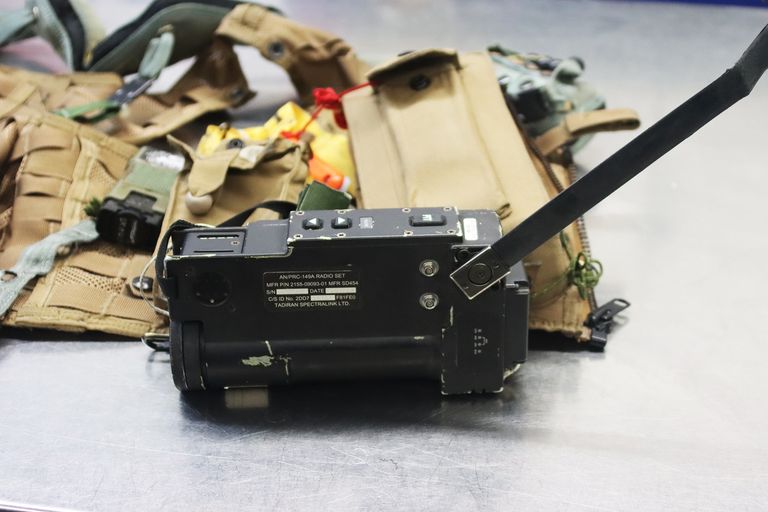
A PRC-149 survival radio. 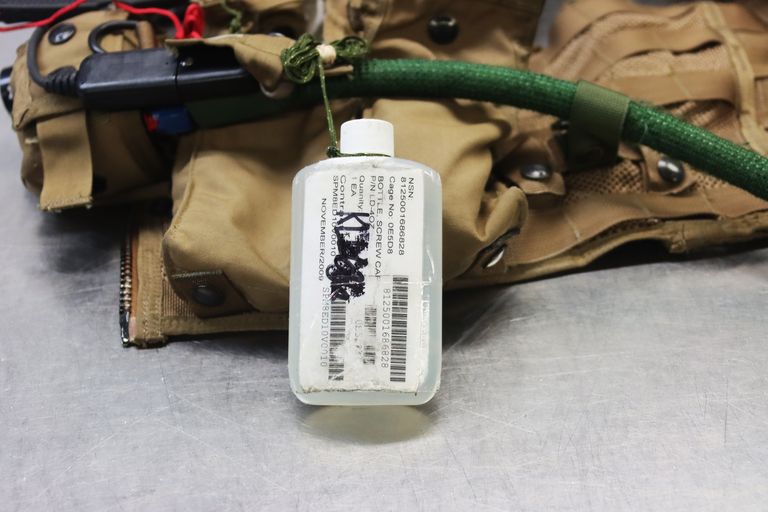
A small water bottle affixed to the vest. 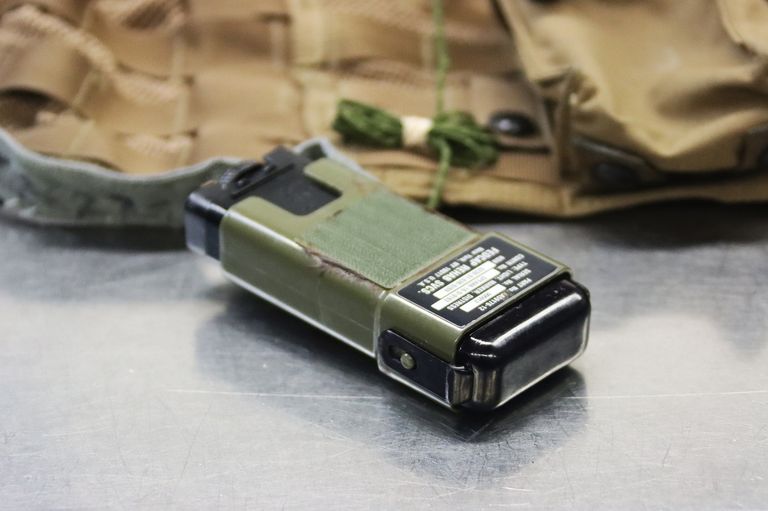
An SDU-39 strobe light. 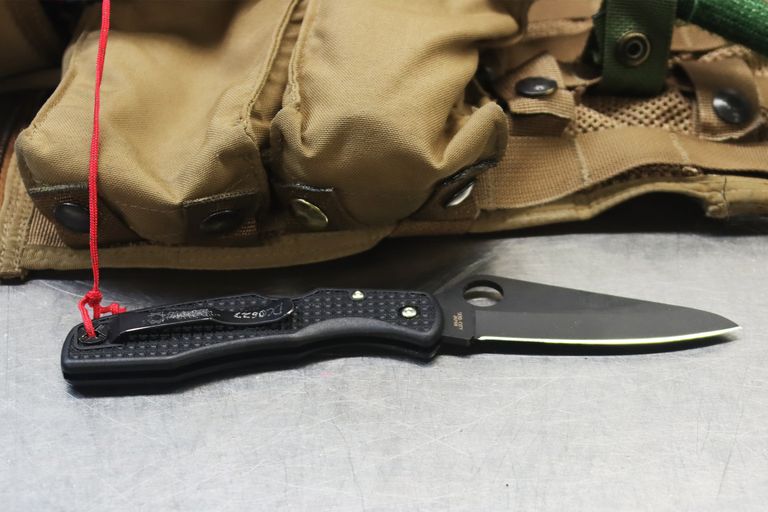
A Spyderco knife attached to a pilot’s survival vest.
Over the top of the PCU-78, an LPU-36/P low-profile flotation collar rides around the pilot’s neck and clips into the harness. Weighing just 3.25 pounds, the collar is rated for 65 pounds of buoyancy—more than enough to keep a pilot’s upper body out of the water. According to Scarbro, the LPU (Life Preserver Unit) inflates automatically when it hits the water so even an incapacitated pilot will stay above water. However, even a pilot who is parachuting over land is still instructed to deploy the LPU. The inflated bladders of the life preserver can protect the aviator’s face and provide additional head and neck support during a rough landing.
Helmets, Masks, and a $214,000 Targeting System
The standard flight helmet for Navy fighter crew is the HGU-68/P tactical aircrew helmet, with a shell made of laminated graphite and ballistic nylon composite. It carries integrated headphones, a tinted or clear visor, a chin strap, and a communications “pigtail” and bayonet receiver to link into an oxygen mask. Aviators often cover their helmets with reflective tape should they need to be seen in a night rescue, and (with apologies to Top Gun) an aviator’s call sign and squadron artwork usually adorns the rear portion of a flier’s helmet, not the camera-friendly front side.
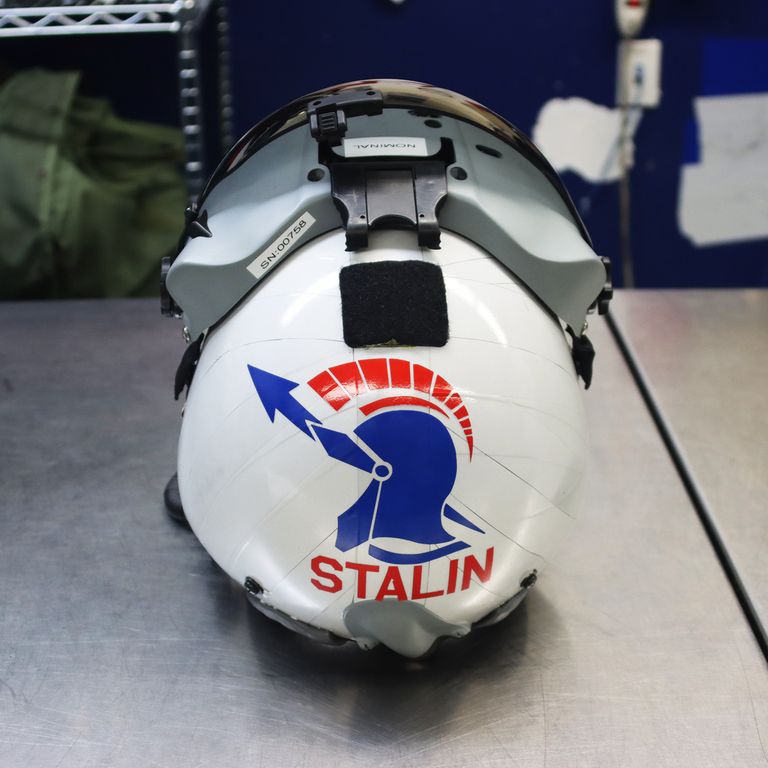
CHIEF MICHAEL COLE/U.S. NAVY
A gray silicone rubber oxygen mask snaps into the helmet on both sides via bayonet clips. In addition to supplying the aviator with breathable air, the mask contains a microphone. The long hose at the front of the mask (think elephant trunk) connects to an oxygen regulator, which is linked to both the in-aircraft oxygen equipment and a small emergency oxygen bottle located in the ejection seat.
A final, case-specific supplement to the helmet is the JHMCS, the joint helmet-mounted cueing system. JHMCS helmets sometimes see action with F/A-18 Super Hornet pilots. These targeting systems allow pilots to direct Sidewinder missiles by sight, even during high-G maneuvers, but they’re too expensive—about $214,000 each—to be standard-issue. “They usually stay with the squadron,” says DeLisio, “unless you’re going to TOPGUN.”
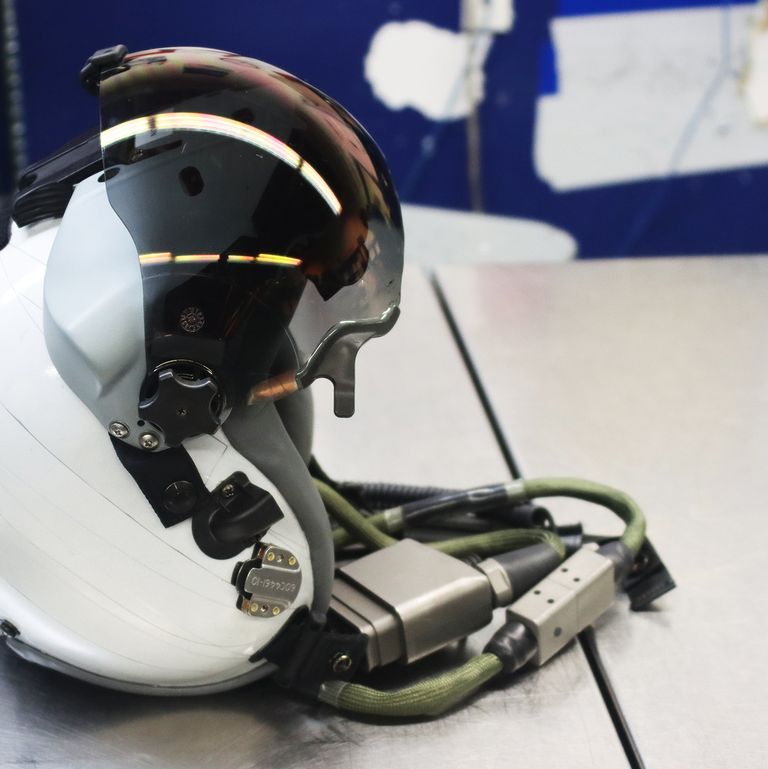
CHIEF MICHAEL COLE/U.S. NAVY
Pilots flying over enemy territory have additional items to lug along, including a survival radio with encrypted voice and GPS capabilities, and infrared signaling devices that can only be seen by friendly forces. Pilots under these circumstances also carry a firearm. The Navy issues the light, small Sig Sauer M11-A1 Compact 9mm pistol.
“Cheaters” and Wristwatches
Since World War II, fighter pilots have been known for big watches and aviator shades. Those trends persist today, as evidenced by a few popular brands and styles. Various companies supply the Navy with versions of the aviator-type HGU-4/P sunglasses. They have light metal frames and nonpolarized glass lenses, and the bayonet-style temples (which extend straight back and don’t curve down behind the ears) help them comfortably fit under helmets and headphones. Standard-issue, they are used by many fighter pilots in the Navy, Marine Corps, and Air Force, especially older aviators who have prescription lenses installed. Pilots call those “cheaters.”
DeLisio says he doesn’t wear sunglasses in the cockpit, but if he did, he’d opt for “knock-around, cheap” shades. “The big thing is the glasses can’t be polarized,” he says. “If they are, you can’t see your screens.”
Scarbro agrees. He says pilots shouldn’t wear glasses they’d hate to lose. “You’re looking for something rugged but disposable.”
Until recently, the inexpensive, practical, and durable Casio G-Shock wristwatch was the timepiece of choice for most fighter pilots. This was Scarbro’s first flying watch. “I flew with it for 15 years and changed the battery exactly one time,” he says. But in 2017, the Navy started issuing Garmin GPS smartwatches to help pilots better track their physiology while flying. Their oxygen levels, heart rate, even the air pressure in the cabin to warn of onset hypoxia can all be monitored. “I’m happy with my Garmin Fenix 5,” Scarbro says, “though I’m not sure I use it to its full potential. It’s got a lot of bells and whistles.”
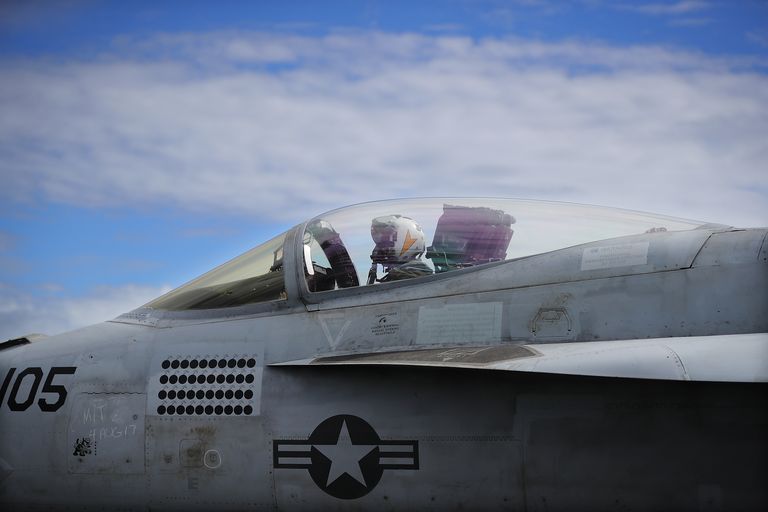
DAN KITWOODGETTY IMAGES
What Stays Behind
Fliers are allowed to take up to five pounds of personal material on flights, though as Scarbro puts it, “No one is putting you on a scale before flying.” He says many pilots will carry an ID, wallet, cellphone, a couple of pens, and a small notebook. But in risky areas, personal effects—phones in particular—may stay behind on the ship. Some pilots even leave behind their wedding rings.
Many pilots fly with a good luck charm or souvenir. A four-leaf clover or a rabbit’s foot, as cliché as it might be, is the right size for a cramped cockpit. Historically, aviators have flown with dice, poker chips, and pint-sized stuffed animals, though Scarbro opts for something a little less kitschy. “I don’t have anything lucky,” he says. “I fly with a red arming wire from a GBU-32 1,000-pound bomb clipped to my helmet bag. It was a weapon I dropped in combat and I keep it as a souvenir. I use it to remind myself that every time I go flying, whether it’s having fun, flying from point A to point B, training, or the real deal, what we’re doing is a serious business.”





